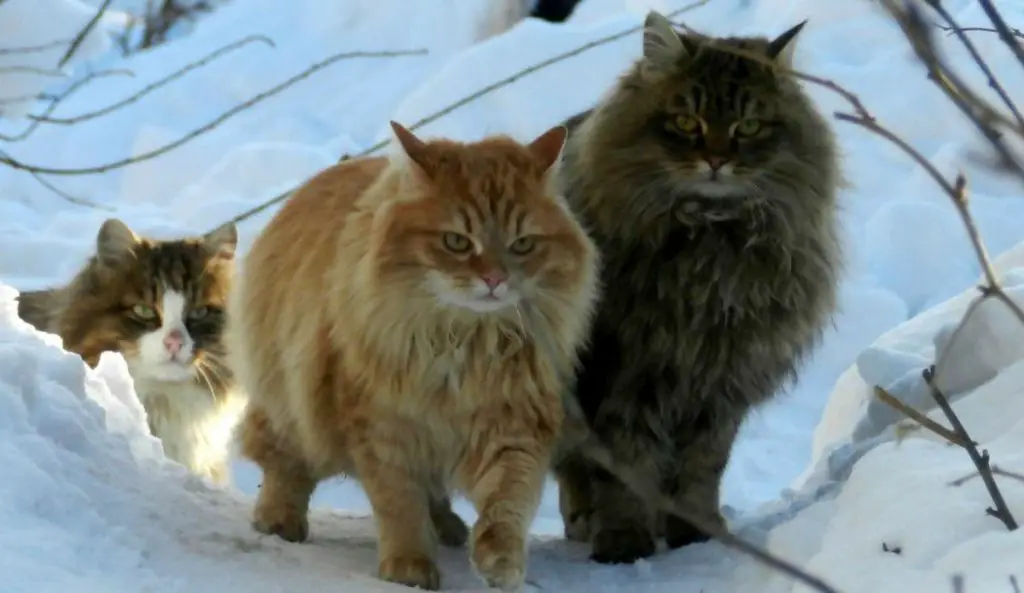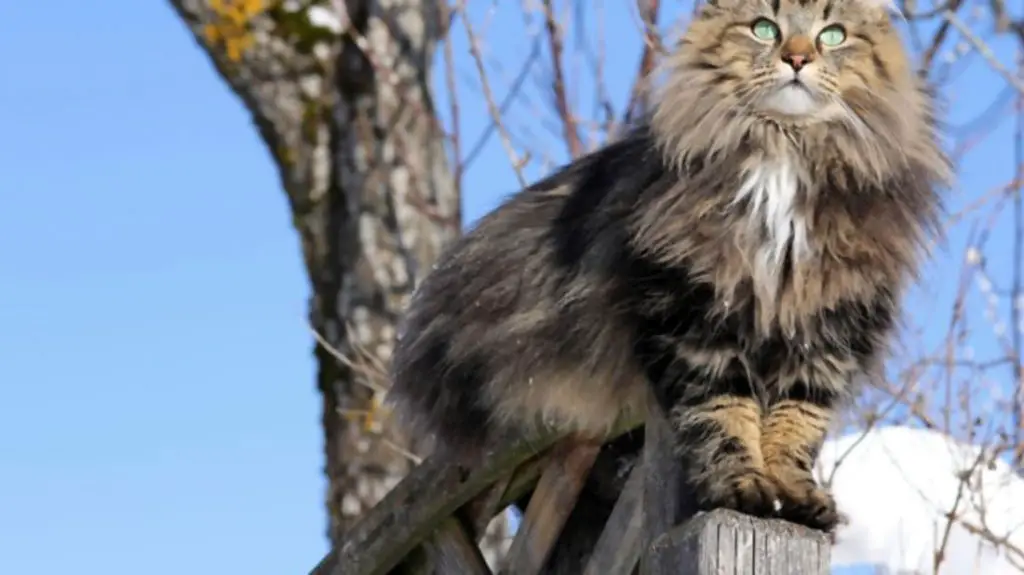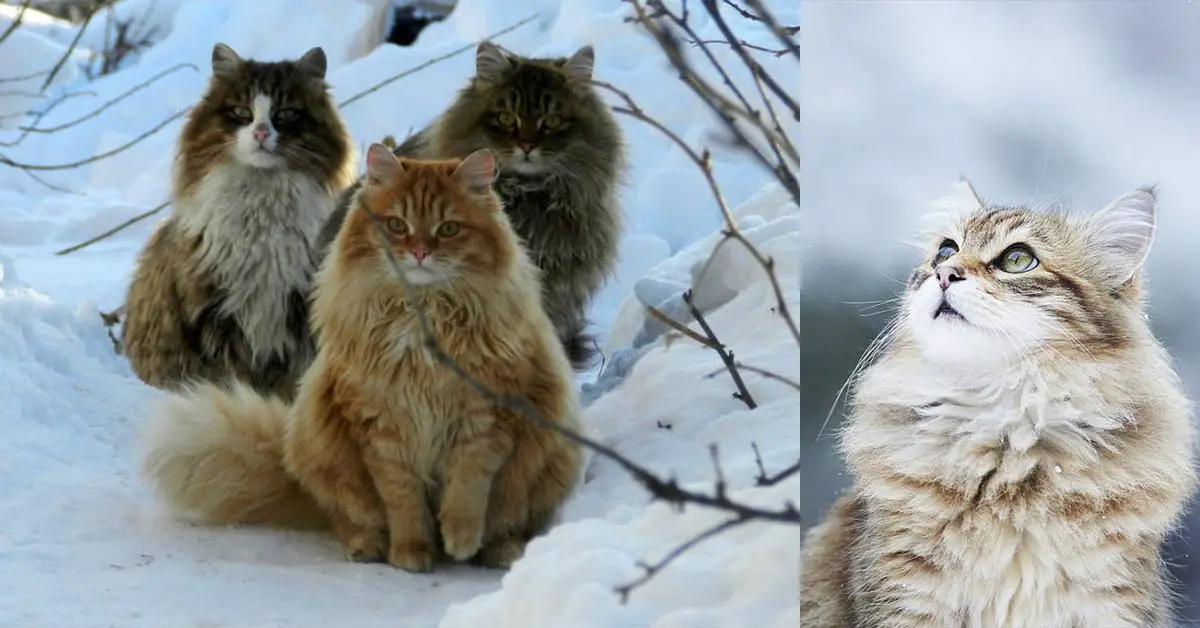The Norwegian forest cats are a very popular cat breed in the Scandinavian region of Europe. They are easily distinguished from other cat breeds by their long-haired coats, triangular-shaped heads, and feisty, regal behavior. Across Norway, Denmark, Sweden, and France, the Norwegian Forest cats, also called “wegies” are a huge part of the legends, culture, and national history.
While the origin of this breed in Norway remains a mystery, legend has it that they were brought into the country by Vikings in the early middle ages. [1] The wegies may be related to the short-haired cats used by the Vikings to keep mice and rats away from their ships as they journeyed through the British archipelago. Over the ages, as they roamed the forests of Norway, the cats evolved and developed long hairs to keep out the extreme cold. They are now accustomed to the bitingly cold temperatures in Norway and the entire Scandinavian region.

Another legend has it that they are related to the long-haired cats brought to the Nordic region centuries ago by crusaders. Well, no one knows for certain, but the furry, cute, and strong cats we know today could have been companions of the awe-inspiring Vikings of the Middle Ages. That’s the legend I choose the believe, Vikings fan and all.
Norway’s national cat

The late King Olaf V of Norway designated the wegies the National Cat of Norway.
With a life span of about 14 to 16 years, the Norwegian Forest cats are big fellas, generally larger than many other cat breeds. Full-grown adult females tend to weigh about 8–18 pounds, while the males weigh 10–20 pounds. These cats are strong-boned, sturdy, and long-legged. They have a double coat to protect them from the cold weather, with a glossy, hairy, and water-repellent top layer and a woolly, insulating coat underneath.
These cats are exceptional climbers, since they have very strong claws. They are known to climb the tallest trees, vertical rocks, and just about any structure or surface.
The wegies became a critically endangered breed during World War II and were almost declared extinct, [2] While they had been greatly useful to sailors and farmers who needed to keep mice out, there wasn’t much need for them during that time of great distress. Thankfully, breeding programs were established by the Norwegian Forest Cat club across the region and in other countries (including the U.S.) to help repopulate the species. In 1977, they were finally registered at the Fédération Internationale Féline as a globally recognized cat breed.
They are prone to health problems
Despite their fuzzy energy and overall body strength, several cases of health issues have been reported in this breed. They are prone to heart disease, kidney disease, and glycogen storage disease type IV (GSD IV), a genetic condition that causes the harmful build-up of the complex sugar glycogen in the body. This can lead to multiple organ failure over time. Although this condition is rare, it is fatal to the cats who develop it.
Cats who have this condition are not used in breeding programs. There are GSD IV DNA tests available for felines all over the region.
Norwegian Forest cats are intelligent, friendly, and energetic. However, they are also talented attention seekers, so get ready to have little to no time to yourself if you consider getting one as a pet.
Watch Animal Planet’s documentary on these fluffy climbers.
Keep Reading: Woman Shares Photos of Amazingly Large and Majestic Maine Coon Cat
References
- “The Norwegian Forest Cats.” The Cat Fancier’ Association. Retrieved December 12, 2019.
- “10 Furry Facts About Norwegian Forest Cats.” Mental Floss. Kirstin Fawcett. February 6, 2017.
- “Glycogen Storage Disease Type IV. International Cat Care. Admin. August 21, 2018.

